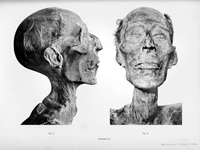This spiral galaxy gives the Hubble Telescope the opportunity to watch some of the most dramatic events in the universe.
Although it's about 130 million light-years away, it faces us, allowing Hubble to easily capture supernova explosions.
Two main types of supernova have been seen in NGC 5468. The first is the explosion that occurs when a giant star exhausts its fuel and collapses under its own weight. The second occurs when a close-orbiting white dwarf attracts too much matter from its companion star, triggering unbridled nuclear reactions in its core. In both scenarios, the explosion is so bright that it can outshine the entire galaxy!
Image description:
A spiral galaxy with a hazy yellow core fills the image. Spiral arms extend outward, filled with white and blue stars.
Image credits: ESA/Hubble & NASA, W. Li et al.


 Nielawore
Nielawore









Yorumlar
muazzam
Yorum yazmak için lütfen giriş yapınız